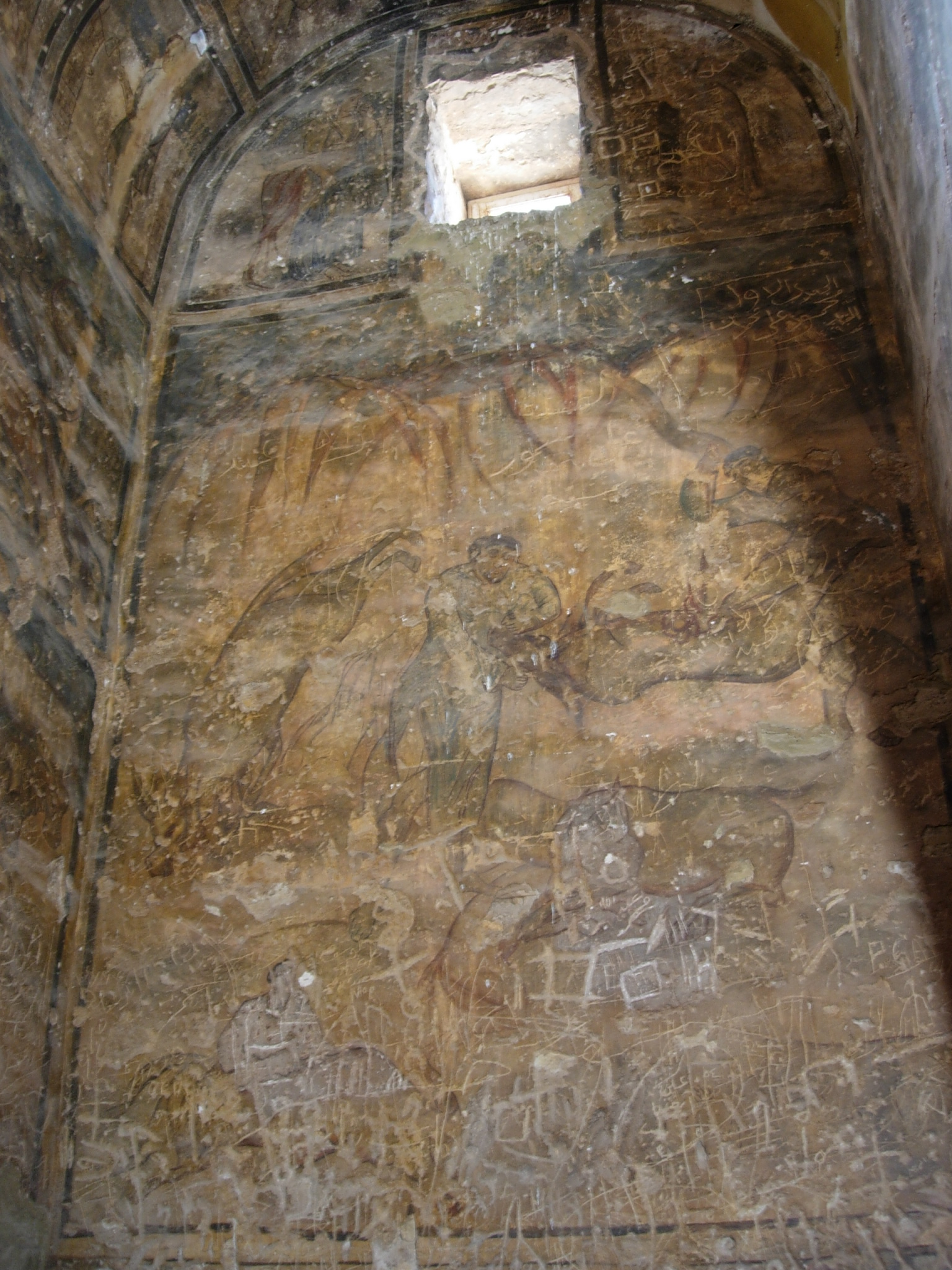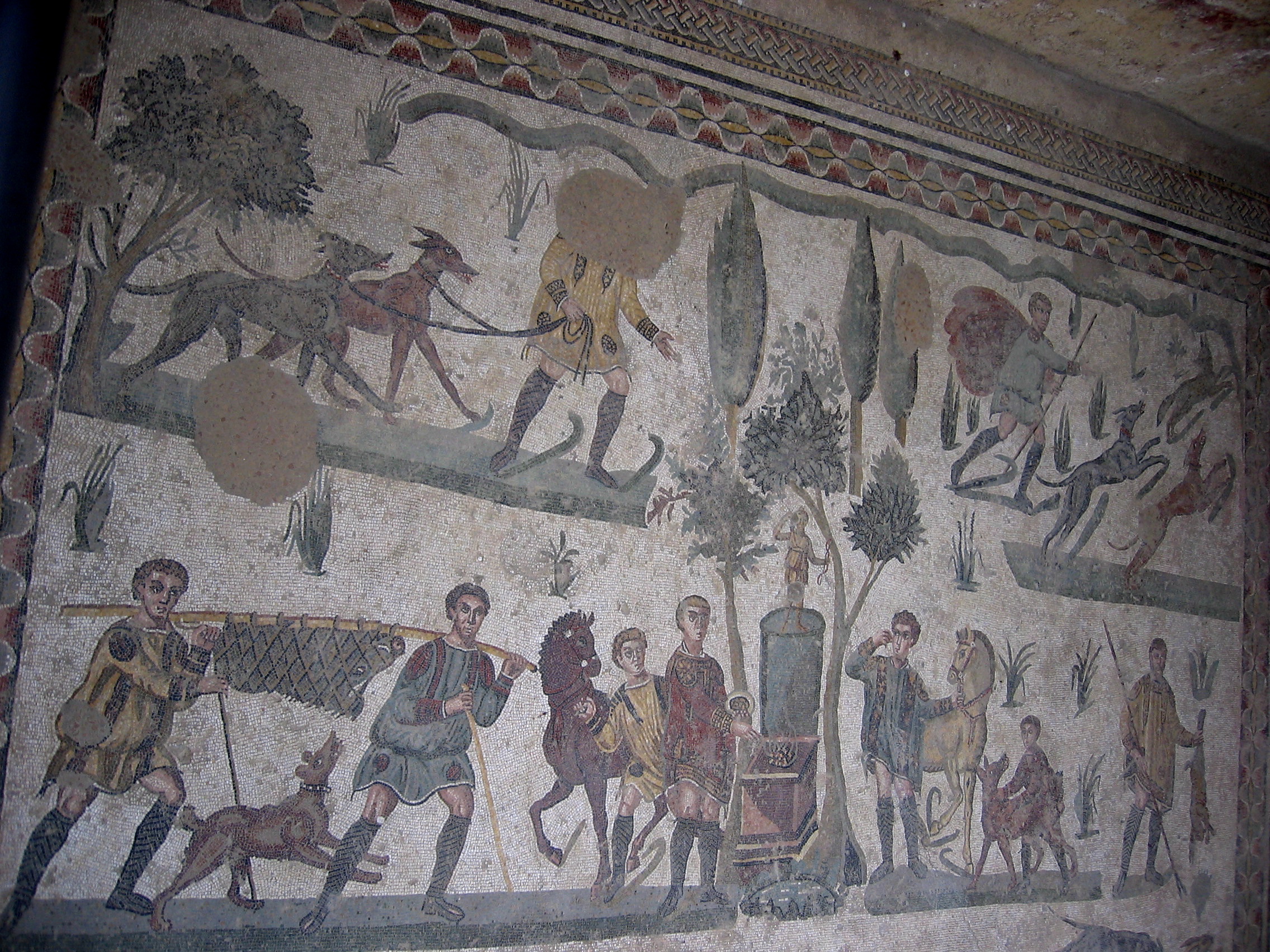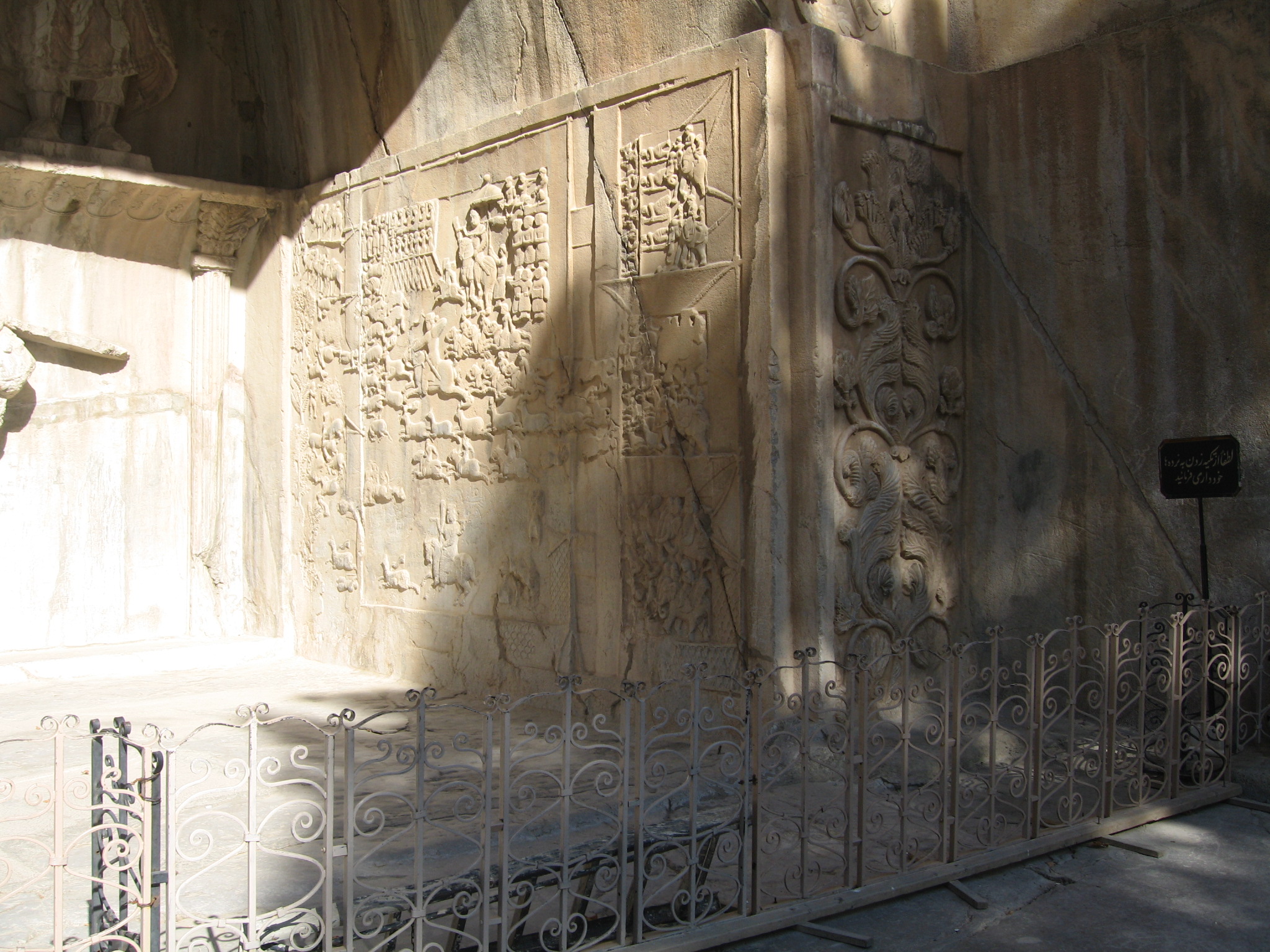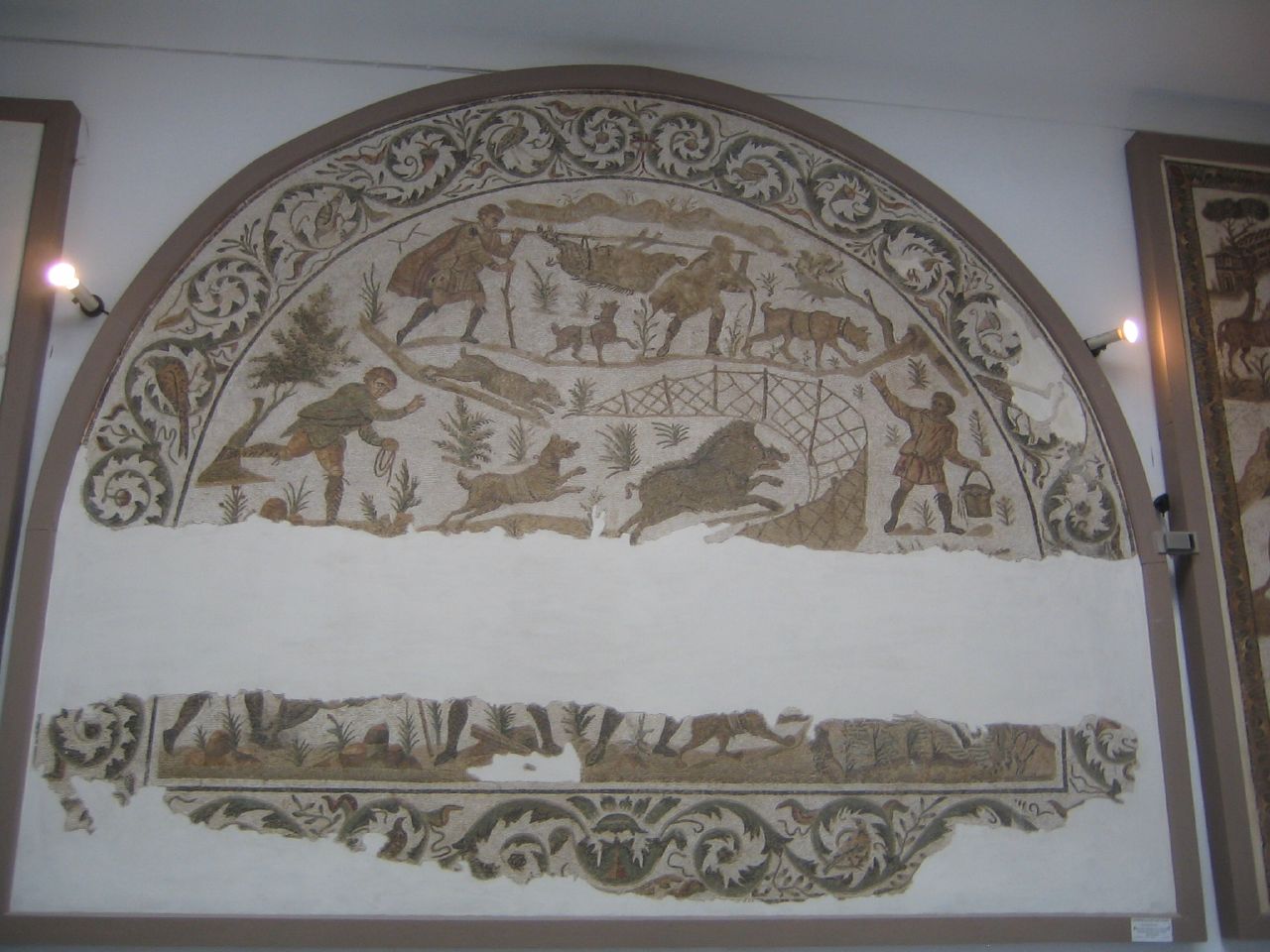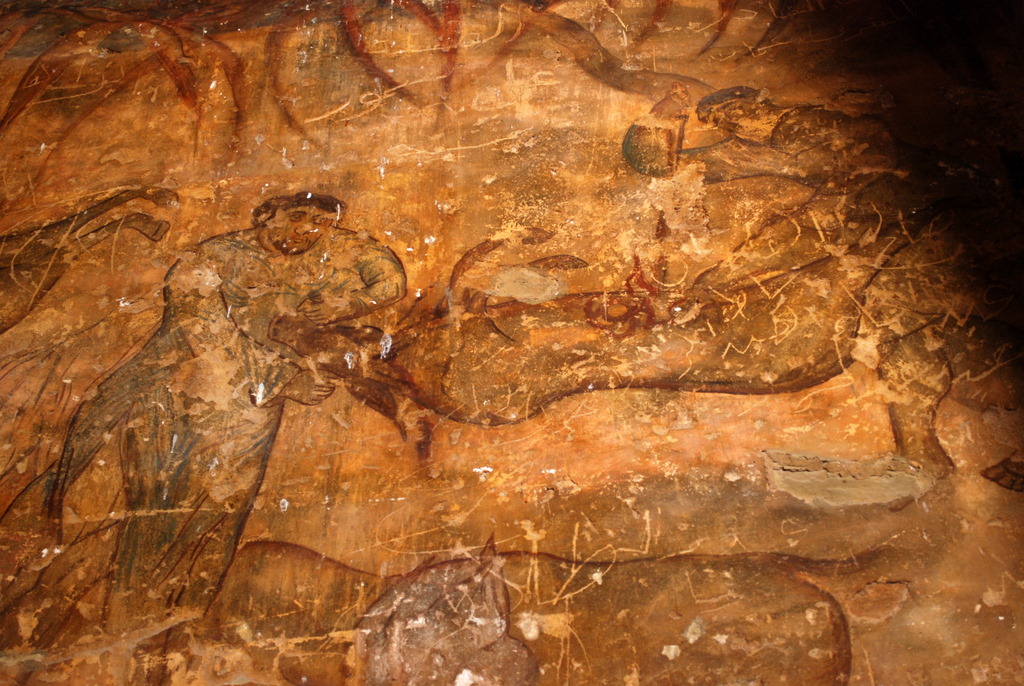Presented at the Bryn Mawr Biennial Graduate Group Symposium “Feed Your Head: Food as Material and Metaphor” on November 12, 2011:
British musician Matthew Herbert ran into problems when he wanted to record the sound of a pig being killed for his recently released album One Pig. When he finally found a slaughterhouse willing to allow him to tape the death of the pig, the attending veterinarian would not permit the slaughter while Herbert was recording. The album features audio from the birth of the pig to its consumption by Herbert and his friends, but it is structured by a central lack: the moment of transition from life to death. This transitional moment is highly regulated by legal and cultural systems today, and its unrecordability itself is a silent statement about what one reviewer for the popular website Pitchfork termed “government-sanctioned ignorance.”
The fundamental fact that Matthew Herbert’s album acknowledges is that humans kill animals for food. Our predation pre-dates us on our evolutionary timeline, and our co-evolution with those animals we term “domesticated” has not changed the fact that we eat them. The moment of death, however, is a sensitive one, which humans have variously emphasized or elided throughout history. We consistently define the human in opposition to the animal, but this self-definition relies as much on a set of disconcerting similarities as it does on our obvious differences.
The subject of my talk today is not Matthew Herbert’s recent album, interesting though it is, but instead a set of wall paintings in an Umayyad bath house in rural Jordan known as Qusayr ‘Amra. The bath house consists of an audience hall and three small rooms – an apodyterium, tepidarium, and caldarium, famous for its celestial dome. An enthroned king occupies the central apse of the audience hall. On the large wall to his left, naked women and rival imperial rulers dominate, surmounted by a hunting scene. The hunt continues on the large wall opposite, and culminates in the slaughter of an animal, possibly an onager or an oryx. The moment is the sole subject of a panel that, within the context of the program, is relatively large, and is located to the right of the doorway between the audience hall and the apodyterium or changing room.
The fact that this scene is so prominent might be taken to suggest that slaughter was not legally or culturally charged in eighth-century Jordan. Religious texts like the Qur’an and the early hadith, however, suggest that it was a traumatic moment of possible contamination, so the real question that this image provokes is how the problematic moment of the slaughter was mediated, both visually and otherwise. Literary texts and visual comparanda suggest that, at Qusayr ‘Amra, the slaughter of the animal becomes meaningful as a node in both historicizing and eroticizing networks, networks which are literally consumed in the form of the body of the slaughtered animal, and visually consumed in its depiction on the bath house walls.
The most obvious (although perhaps least satisfying) explanation for the hunting and slaughtering scenes is that the bath house and an associated residential structure, now ruined, were probably occupied seasonally by an aristocratic or royal patron. The owner and his entourage could use the rural estate as a base from which to hunt animals drawn to the nearby Azraq oasis. The practice predates the Umayyads, as indicated by the prehistoric hunting traps known as kites which still dot the landscape. It is not, however, self-evident that a space associated with hunting would feature images of hunting, and indeed, earlier hunting scenes are found in both urban and rural aristocratic residences, as well as on public memorials and silverware. If anything, hunting seems to be associated with dining, so its presence in the reception hall of a bath house is not easily resolved.
Hunting scenes are quite common in Late Antique art, and I’m not the first to point to both Byzantine and Sassanian precedents for the hunt at Qusayr ‘Amra. Very close parallels to the panel on the North wall, which depicts hunters on horseback driving onagers into a net, can be found in the fourth-century mosaics of the Villa Romana del Casale, better known as Piazza Armerina, which exemplify hunting scenes found in residences throughout Mediterranean like this example from a villa in Tunisia, now in the Bardo museum. Images of aristocratic horsemen hunting with nets can also be found in Sassanian Persia on silver plates (State Hermitage Museum, acc. no. S216) and wall reliefs like those at Taq-i Bustan, which accompany a scene of the coronation of the late sixth-century ruler Khosrau II. Taking a more local perspective, late second-century hunting and feasting murals from Dura Europa seem to participate in a closely related tradition. It’s hard to explain this preponderance of hunting scenes unless they were accomplishing some kind of cultural work throughout the Late Antique world – they were not only passively decorating private residences and public monuments, but also actively constructing various facets of their patrons’ personas and worldviews.
If, as the popularity of these scenes suggest, hunting is producing meaning across cultural contexts, the kind of slaughter we find at Qusayr ‘Amra seems to have had a more limited appeal. In the focal point of the panel in question, one man thrusts a spear or sword into the flank of the animal while another man holds the animals head. Although it is difficult to discern exactly what the hands of the man on the left are doing (especially in the wake of a poorly documented Spanish restoration program), it’s possible that he is in the process of cutting the throat of the animal. Whether he is actively cutting the throat or not, the fact that the throat has been cut is clear. Blood streams from a neck wound while flame-like entrails or fountains of blood emerge from the other.
In contrast to the plentiful comparanda for the hunting scenes, images like this one are quite rare in Late Antique art. A few of the Byzantine mosaics from North Africa and Italy depict men returning from the hunt with their trophy suspended from a pole. Between them, a dog stares up at the dead animal. This motif manages to convey the success of the hunt while eliding the trauma of the moment of death and disembowelment. None of the Sassanian silver plates contain anything like the Qusayr ‘Amra slaughter. At Taq-I Bustan, on the other hand, the lower right corner of the boar-hunting panel is devoted to the field-dressing of the boars. This is the closest parallel to the Qusayr ‘Amra scenes, but it is both integrated into a much larger composition and relegated to the margins.
The bloody neck of the animal in the ‘Amra slaughter suggests that the animal has been, or is being, killed in such a way as to be considered edible according to Qur’anic prescription. When smaller animals, for example sheep or goats, are killed, the living animal is laid on its side with its head oriented towards Mecca, the animal is dedicated to God, usually in the form of a small prayer, and the blood vessels of the neck and trachea are cut with a knife or sword. This practice is known as ذبيحة (dhabihah), translated as “the act of killing by slitting the throat,” and seems to have emerged from pre-Islamic practices of animal sacrifice, although the historical codification of this practice in the exegetic biographies of the prophet known as hadith and in legal scholarship has not yet been systematically analyzed.
In a program that is otherwise secular, it’s tempting to latch onto the slaughter as an irruption of Islamic religious identity. While this scene may have functioned to distinguish Qusayr ‘Amra’s patrons from a regional population that was probably still largely Christian in the early eighth century, I’m reluctant to accept this as the only or even most important reading of the scene. Much of Islamic art has been mired in interpretive bogs as scholars ransacked it in search of “the Islam” in Islamic art. Furthermore, if Qusayr ‘Amra functioned as a meeting place between the Umayyad aristocracy and their semi-nomadic tribal subjects, as some have argued, the technique of the slaughter might actually have been read as a marker of shared traditions between the seasonal residents and their guests, although in this case it’s more likely that both parties would have taken the technique for granted. Tracing the meanings of the hunt as they appear in literary texts, however, might help us understand what is at stake in the images of slaughter.
Literary evidence suggests two possible readings of the hunt. The first is as a powerful metaphor for desire and amorous pursuit in pre-Islamic and early-Islamic poetry.
Oh, how wonderful is the beauty of the doe of the hunt, to whom is she lawful? To me she is unlawful; would to God that she was not unlawful.
So, I sent my female slave, and said to her, “Go, find out news of her and inform me.”
She said, “I saw carelessness on the part of the enemies, and that the doe is possible to him who is shooting.”
And it was as though she looked toward me with the neck of a doe, a fawn of the gazelles, pure and with a white upper lip.
I am informed that ‘Amru is unthankful for my kindness while ingratitude is a cause of evil to the soul of the giver.The Poem of Antar
Trans. F.E. Johnson
In the late sixth-century poem of Antar, the female beloved of the speaker is referred to as “the doe of the hunt.” A fragment of poetry by the eighth century caliph al-Walid II, a potential patron of Qusayr ‘Amra, records a similar metaphor, while another recounts an incident in which he released an antelope with eyes like those of his beloved.
We caught and would have killed an antelope
That ran auspiciously to the right.
But then it gently turned its eyes and looked –
The very image of your look!
We let it go. Were it not for our love
For you, it surely would have died.
Now, little antelope, you’re free and safe.
So off you go,
Happy among the other antelopes.Al-Walid II
Trans. by R. Hamilton
Hunting dogs were also praised in poetry. Lengthy exaltations of hounds formed the core of a distinct subgenre of metrical verse by the early eighth century. These descriptions take on a doting, quasi-erotic quality at times. In one poem Abu Nuwas writes, “his master is always like a slave to him; at night he brings him nearest to his bed. If he is uncovered, his master puts on him his own coat.” The evocation of the master/slave dynamic, here inverted from the culturally legible structure of the relationship between hound and owner, figures the relationship between man and dog in the hierarchical terms that also structured erotic relationships.
In addition to these erotic overtones of the hunt, the literary and etymological evidence suggest that the animals of the hunt were bearers of cultural memory. The hunting dog depicted is a type of gaze-hound, which hunts by sight as opposed to a scent-hound which hunts by smell. The word for such hounds is سلوقي (saluqi), a term derived from the Hellenistic capital Σελεύκεια (Seluecia), located at roughly the same point on the Tigris where the Persian capital Ctesiphon was built, and quite close to where the Abbasids would found Baghdad only a few decades after the construction of Qusayr ‘Amra. It’s possible that this etymology operated below the level of discursive awareness, but other animals had undeniably historicizing genealogies. From the كتاب الحيوان (Kitab al-Hayawan), or Book of Animals by al-Jahiz, we learn that the onagers depicted throughout the hunting and slaughtering scenes were thought to be descended from the horses of Persian royalty.
Scholars say that the asses called akhdariyya, which are the largest and handsomest of the onagers, originated as follows: horses belonging to the kings of Persia reverted to a wild state and mated with she-asses, which brought forth these beautiful onagers. Others say that the akhdariyya are asses from the Kazima area that are virtually amphibious. But the mating of horses and asses can only yield mules, and mules do not have viable offspring: so how could the mating of these horses and she-asses have produced onagers which later multiplied in that part of the desert?
When the king of Persia captured an onager when out hunting, he would mark it with his name and the date of capture and let it go again. If by chance the same onager was captured a second time, the royal cipher was added to that of the previous monarch and the animal again released. In this way it was possible to gain information about the life span of these onagers.
Kitab al-Hayawan, Jāḥiẓ
Trans. Charles Pellat
The precise mechanics of this descent, however, remained puzzling – the offspring of horses and asses are almost always infertile. As something of a curious footnote, the real bodies of onagers were sometimes inscribed with the names of kings, and functioned as evanescent dynastic memorials in an early example of catch and re-catch population research. In addition to historical precedents for the hunting scenes that would have layered them with additional meaning, the bodies within the scenes themselves resonated with historical significance.

While the hunt is implicated in both of these networks of meaning as a site, either real or imaginary, of instantiation, the delicate connotative connections break down as the hunt reaches its logical conclusion. The patrons and guests probably would not have been comfortable with the culinary culmination of an erotic metaphor (or for that matter the eroticism hinted at in poetic praise of hunting dogs), but the combination of naked women and slaughtered animals on display carries the metaphor to its logical conclusion even if poetry cannot. On the other hand, while hunters may not have conceived of animals as historical signifiers as they were busy with the practicalities of finding and killing them, the ways in which animals are killed produce fundamentally historicizing technical genealogies. What we are left with then is the tangled logic of desire and the queer kinship of historicism – in short the intersection of desire, history, and edibility in the dead animal depicted on the wall.


